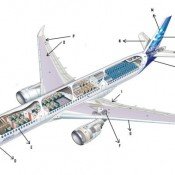Cabin crew procedures
 [audio:http://aviationenglishblog.com/wp-content/uploads/2010/09/Cabin_Crew_Procedures.mp3|titles=Cabin_Crew_Procedures]
[audio:http://aviationenglishblog.com/wp-content/uploads/2010/09/Cabin_Crew_Procedures.mp3|titles=Cabin_Crew_Procedures]
Cabin crew procedures
Aim
- Practice English skills in an aviation context
- Revise some typical procedures and test yourself on knowledge you not only need to know but may be tested on during interviews
- Have fun!
The list of cabin crew procedures can be daunting but don’t worry, there’s always a Flight Attendant’s Manual on board! For this lesson, let’s focus on the pre-flight safety announcement, followed by some revision of ICAO abbreviations.
ICAO, the International Civil Aviation Organisation, sets international aviation safety standards. A typical pre-flight safety announcement will include:
- A reminder to review the aircraft safety card
- The use of the seat belt
- The requirement that passengers must comply with lighted signs, posted placards, and crew members instructions
- The location and use of the emergency exits, evacuation slides and emergency floor lighting
- The use of the oxygen mask
- The location and use of the life vests, life rafts and flotation devices (not typically included if the flight does not overfly or fly near vast masses of water)
- The brace position
- A reminder not to smoke onboard, including the toilets
- The precautions to take before take-off and landing: to stow luggage under a seat or in an overhead compartment, to return folding trays and seat backs to the upright position, to turn off electronic devices
























